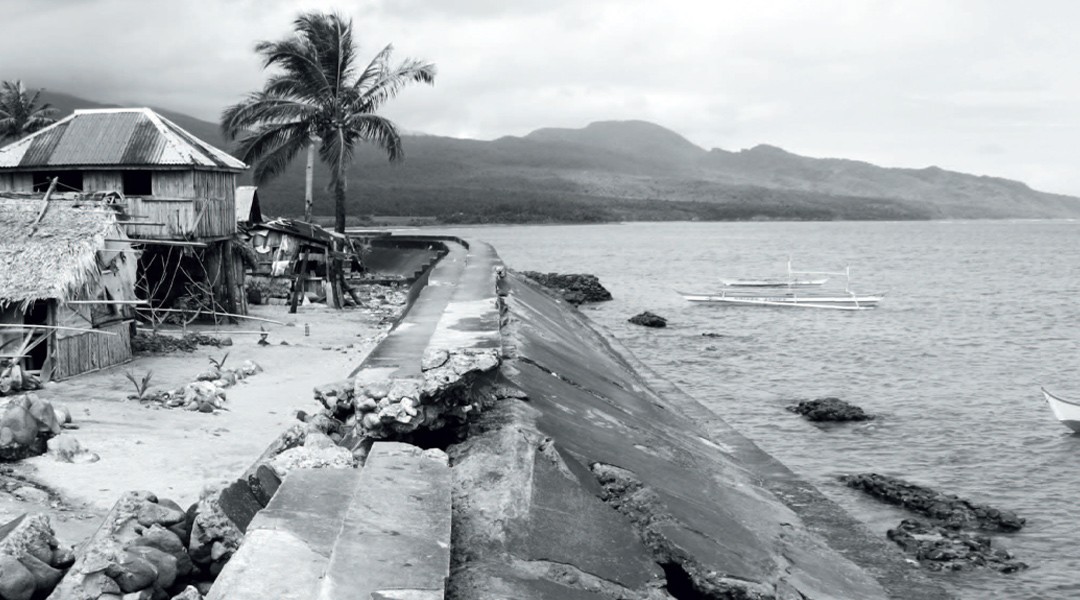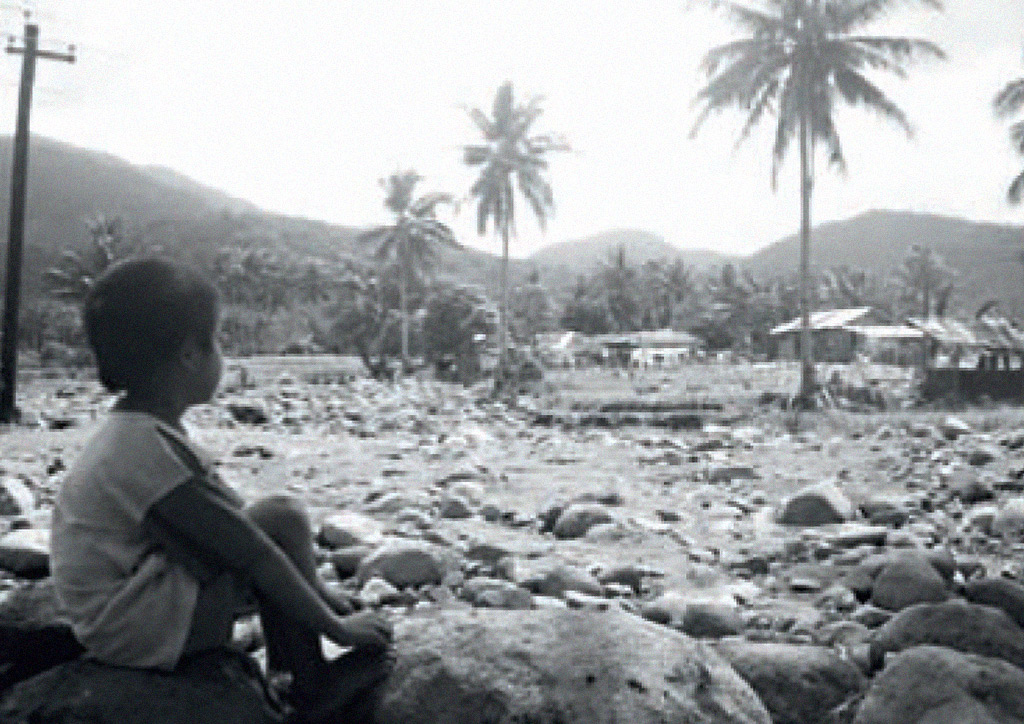
Sorsogon reinvents itself to be disaster-resilient
Editor’s Note: In light of the recent natural calamities that the Philippines has faced over the past weeks, BluPrint is looking back at archival materials that reveal important lessons from disasters that have passed, which remain relevant in the present, as well as tried and tested practices to recover from the devastation and become disaster-resilient. This article, written by architect and urban environmental planner Nathaniel von Einsiedel, shows how Sorsogon City recognized the risks brought about by climate change and engaged its people and the private sector in climate change adaptation planning.
This first appeared in BluPrint Special Issue 2 2011. Edits were made for BluPrint online.
Frequently faced with all kinds of disasters, Sorsogon City has become a model for disaster-resilient towns and cities.
Situated in the Bicol Region, Sorsogon City is directly exposed to the Pacific Ocean where most of the typhoons that hit the Philippines come from. The city and the province of Sorsogon are particularly vulnerable to tropical cyclones and storm surges, extreme rainfall and flooding, fluctuations in temperature, and rising sea levels.
Reming (November 2006) caused widespread damage to the city. Milenyo affected more than 27,000 families and damaged over 10,000 houses. Damage to agriculture and fisheries was estimated at P234 million, and P208 million to public infrastructure. In May 2009, Sorsogon City was again placed under a state of calamity following the devastation brought by tropical depression Dante, which brought four days of continuous heavy rain. According to reports, 20 people from the city were killed in the floods, some 54,308 people had to be evacuated, and many roads were not passable for three to four days. In December 2010, tropical storm Osiang flooded several coastal and a few upland barangays again.

Every year, Sorsogon City faces climate-induced disasters that affect not only physical structures but also social infrastructures, reducing the city’s capacity to achieve and sustain development.
Three years ago, the city recognized that climate had changed over the years and that local actions were needed to meet the challenges of climate-induced hazards. In 2008, Leovic Dioneda (then Sorsogon City Mayor) championed an initiative to develop appropriate responses to these challenges.
As one of the four initial pilot cities of UN-HABITAT’s Cities and Climate Change Initiative, Sorsogon City, in partnership with the local communities affected by the recent typhoons, conducted a climate change vulnerability and adaptation assessment. Experts combined quantitative data with community observations. Based on previous events and projected future scenarios, they forecasted that Sorsogon City would be facing an increase in temperature of up to two degrees Centigrade in 2050, and an increase in rainfall volume by about 30 percent. With the global rise in temperature, more intense and stronger typhoons would directly hit Sorsogon.
The assessment showed that 24 barangays with a combined population of over 55,000 people are flood-prone. Over 35,000 people who live in the nine coastal barangays are the most vulnerable to climate-induced hazards because of their location, aging and previously damaged structures, and inadequate drainage facilities. What’s more, the livelihoods of 211 small farmers tilling some 204 hectares of rice paddies, and 1000 fishermen are at risk.
YOU MIGHT LIKE: The geography of risk and resilience in Guiuan, the first town hit by Haiyan
In the community consultation regarding sea level rise, Dan Lasan, an officer of Barangay Cambulaga, said, “Sadto baga an haranihon lang ina isla hale didi. Niyan, baga huminarayun na…baga an dagat sa tunga san isla nan an tangpi san duta huminalapad.” (Before, it seemed that the island was near the shoreline. Now, it appears that it has moved away from the shoreline, and the sea water in between has become wider.) Another resident, 62-year old Lorna Figueroa of Barangay Poblacion, commented, “During my teenage days, there was still another street after the seawall now (referring to the inundation of the beach) and the shoreline then was far from the present seawall. Mangroves and plants were abundant on the shore.”
Sorsogon City recognized the risks of these climate change scenarios and engaged local communities and the private sector in climate change adaptation planning. Using tools from UN-HABITAT’s Sustainable Cities Program, the city conducted multi-sector consultations that resulted in defining four priority “quick-win” responses to increase people’s resilience to climate-induced disasters. These are:
- improving settlements and basic infrastructure, such as elevating houses with stilts to be higher than flood levels
- enhancing livelihood, such as the introduction of community gardens
- developing climate change and disaster risk management systems, such as incorporating disaster risk reduction measures into local development plans and building regulations
- improving environmental management and climate change mitigation actions, such as revising the city’s land-use plans and zoning ordinances to prevent further development in disaster-prone areas.
The consultations identified urban hotspots—the areas where severe climatic conditions would impact large numbers of urban poor households. A thorough assessment of individual households living in the hotspots was conducted to identify the most vulnerable groups, such as women and children, the elderly, and persons with disabilities. The hotspots were mapped to easily identify their location and predict the possible extent of the damage from disasters.

The experience from this highly participatory assessment was documented and developed into a publication entitled Participatory Vulnerability and Adaptation Assessment: A Toolkit Based on the Experience of Sorsogon City, Philippines, which is accessible on the website of UN-HABITAT. As of this writing, the city is updating its development plans to incorporate measures to mitigate and reduce disaster risks and climate change impacts. These plans, which complement the city’s disaster preparedness plan, guide and regulate the future physical growth and development of the city.
The international community has taken notice of the city’s achievements, and Mayor Dioneda has been invited to several international conferences over the past few years where he presented his city’s experience. So impressed were the participants that they have asked for copies of the tools that Sorsogon City has used in addressing its climate-induced challenges. It seems that while Sorsogon City may be small and relatively unknown compared to other cities, its innovative approach can be helpful to other settlements in the Philippines and elsewhere that face the daunting challenges expected of our changing climate.
Climate change is the preeminent development challenge of the 21st century, and the future of hundreds of millions of people around the world will be determined by the quality and pace of adaptation and mitigation undertaken by cities. Sorsogon City stands out as a viable model in proactively addressing this challenge.![]()
READ MORE: Did we even learn our design lessons after Typhoon Ondoy?


